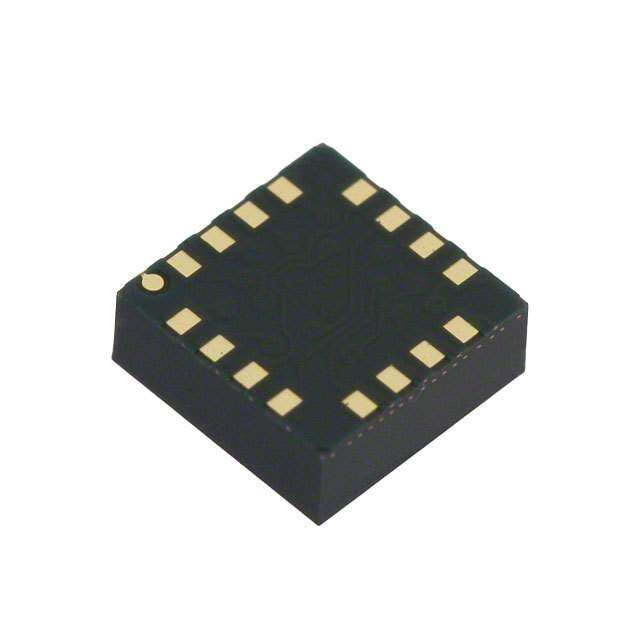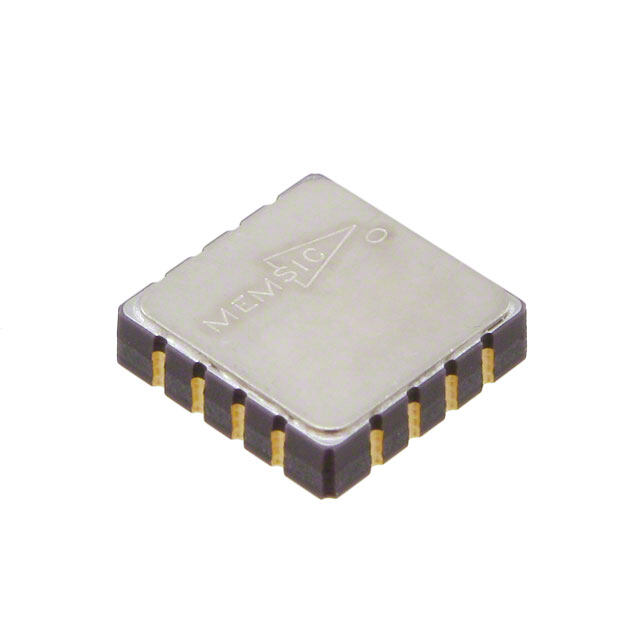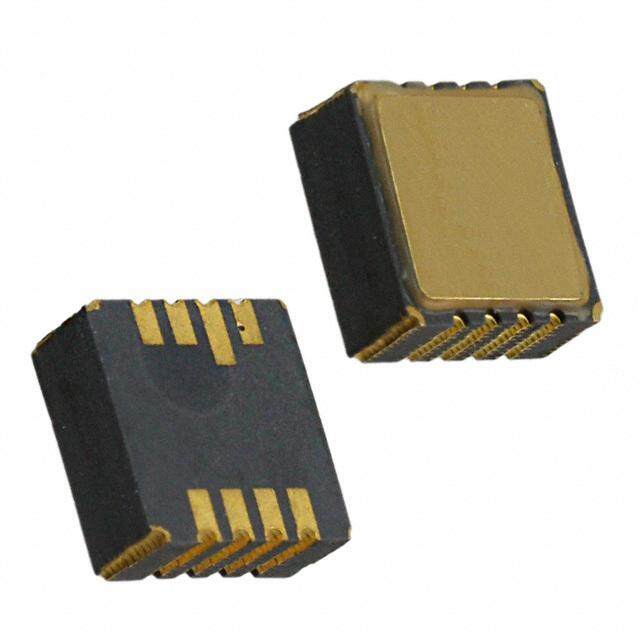ICGOO在线商城 > 传感器,变送器 > 运动传感器 - 加速计 > ADXL327BCPZ
- 型号: ADXL327BCPZ
- 制造商: Analog
- 库位|库存: xxxx|xxxx
- 要求:
| 数量阶梯 | 香港交货 | 国内含税 |
| +xxxx | $xxxx | ¥xxxx |
查看当月历史价格
查看今年历史价格
ADXL327BCPZ产品简介:
ICGOO电子元器件商城为您提供ADXL327BCPZ由Analog设计生产,在icgoo商城现货销售,并且可以通过原厂、代理商等渠道进行代购。 ADXL327BCPZ价格参考。AnalogADXL327BCPZ封装/规格:运动传感器 - 加速计, Accelerometer X, Y, Z Axis ±2g 1.6kHz (X,Y), 550Hz (Z) 16-LFCSP-LQ (4x4)。您可以下载ADXL327BCPZ参考资料、Datasheet数据手册功能说明书,资料中有ADXL327BCPZ 详细功能的应用电路图电压和使用方法及教程。
| 参数 | 数值 |
| 产品目录 | |
| 描述 | IC ACCELEROMETER 3AX 2G 16LFCSP加速计 Small 3-Axis +/-2g Low Power |
| 产品分类 | 加速计运动与定位传感器 |
| 品牌 | Analog Devices |
| 产品手册 | |
| 产品图片 |
|
| rohs | RoHS 合规性豁免无铅 / 符合限制有害物质指令(RoHS)规范要求 |
| 产品系列 | 加速计,Analog Devices ADXL327BCPZ- |
| 数据手册 | |
| 产品型号 | ADXL327BCPZ |
| 产品种类 | 加速计 |
| 传感轴 | Triple |
| 供应商器件封装 | 16-LFCSP-LQ(4x4) |
| 分辨率 | - |
| 加速 | 2 g |
| 加速度范围 | ±2.5g |
| 商标 | Analog Devices |
| 安装类型 | 表面贴装 |
| 安装风格 | SMD/SMT |
| 封装 | Tray |
| 封装/外壳 | 16-LQFN 裸露焊盘,CSP |
| 封装/箱体 | LFCSP-16 |
| 工厂包装数量 | 490 |
| 带宽 | 1.6kHz - XY,550Hz - Z |
| 接口 | - |
| 最大工作温度 | + 85 C |
| 最小工作温度 | - 40 C |
| 标准包装 | 1 |
| 灵敏度 | 420 mV/g |
| 电压-电源 | 1.8 V ~ 3.6 V |
| 电源电压-最大 | 3.6 V |
| 电源电压-最小 | 1.8 V |
| 电源电流 | 350 uA |
| 系列 | ADXL327 |
| 视频文件 | http://www.digikey.cn/classic/video.aspx?PlayerID=1364138032001&width=640&height=505&videoID=2245193160001http://www.digikey.cn/classic/video.aspx?PlayerID=1364138032001&width=640&height=505&videoID=2245193171001http://www.digikey.cn/classic/video.aspx?PlayerID=1364138032001&width=640&height=505&videoID=2245193161001http://www.digikey.cn/classic/video.aspx?PlayerID=1364138032001&width=640&height=505&videoID=2245193172001 |
| 轴 | X,Y,Z |
| 输出类型 | Analog |

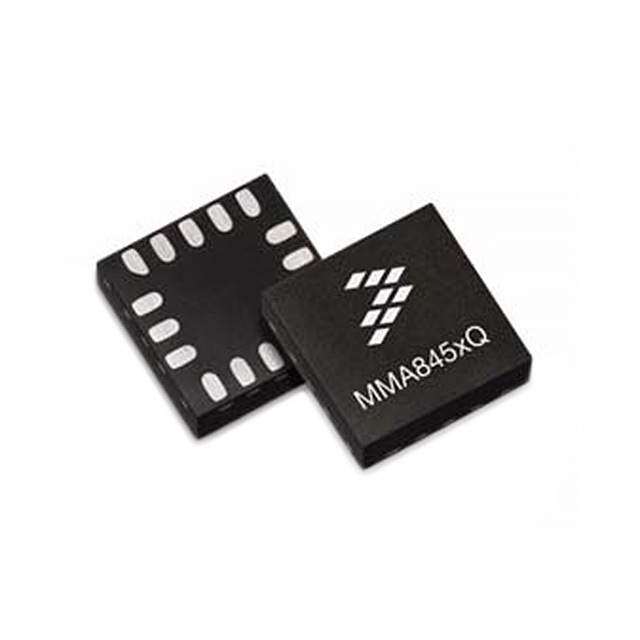

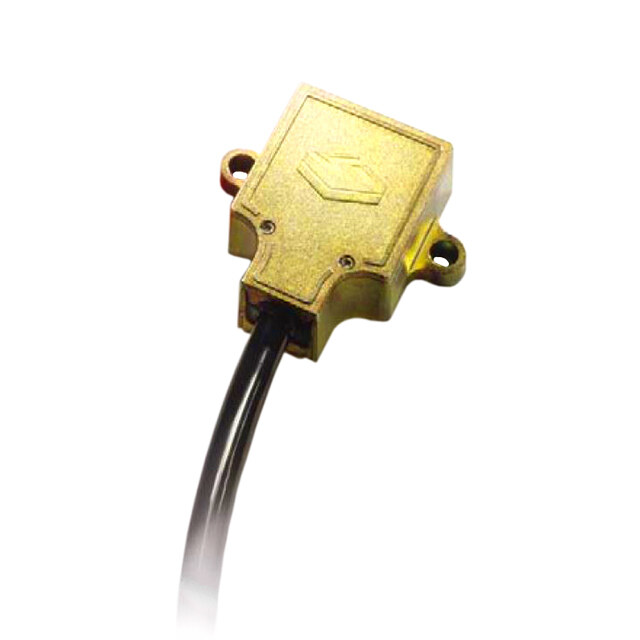
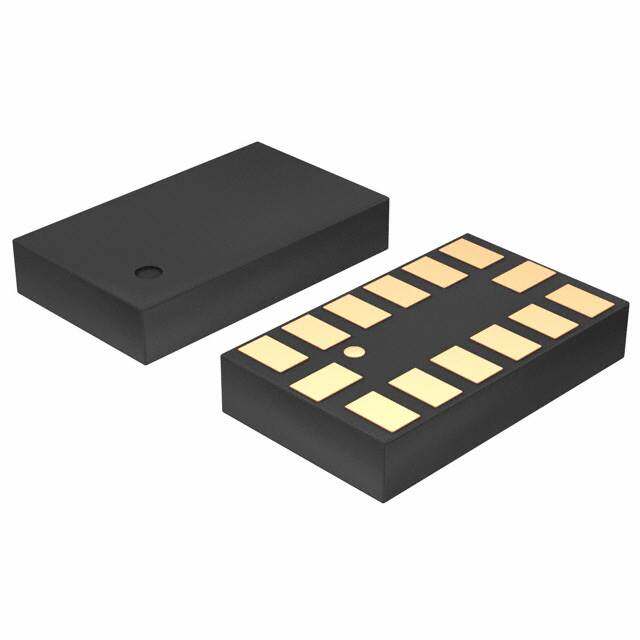

- 商务部:美国ITC正式对集成电路等产品启动337调查
- 曝三星4nm工艺存在良率问题 高通将骁龙8 Gen1或转产台积电
- 太阳诱电将投资9.5亿元在常州建新厂生产MLCC 预计2023年完工
- 英特尔发布欧洲新工厂建设计划 深化IDM 2.0 战略
- 台积电先进制程称霸业界 有大客户加持明年业绩稳了
- 达到5530亿美元!SIA预计今年全球半导体销售额将创下新高
- 英特尔拟将自动驾驶子公司Mobileye上市 估值或超500亿美元
- 三星加码芯片和SET,合并消费电子和移动部门,撤换高东真等 CEO
- 三星电子宣布重大人事变动 还合并消费电子和移动部门
- 海关总署:前11个月进口集成电路产品价值2.52万亿元 增长14.8%
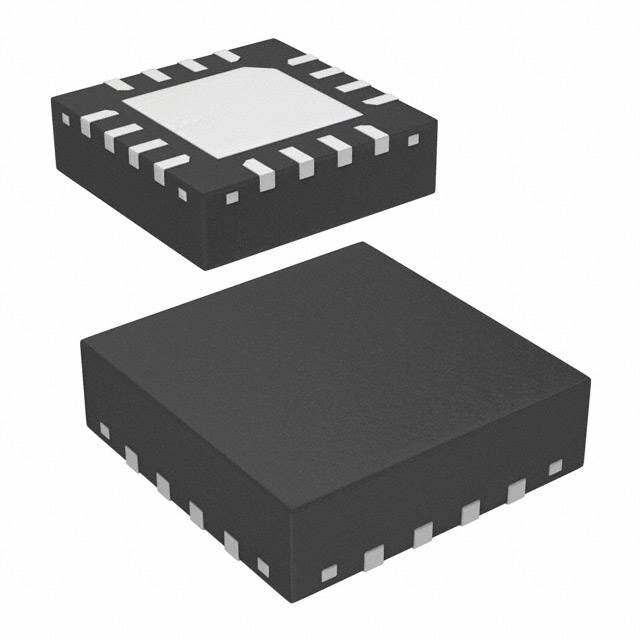

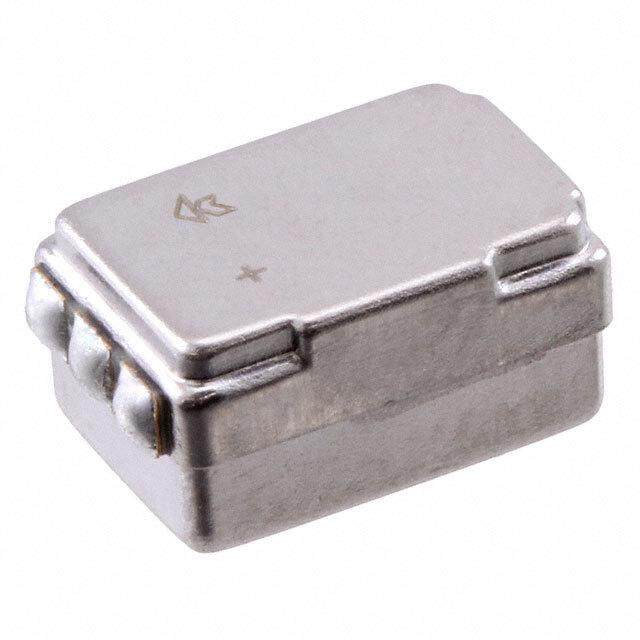
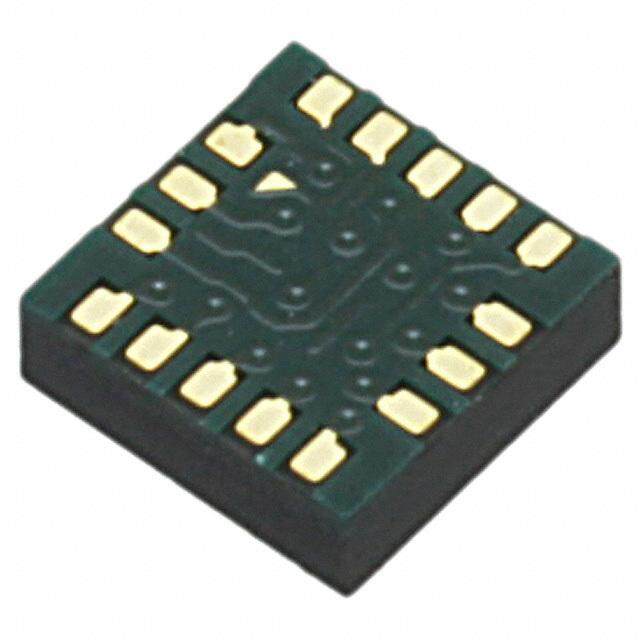

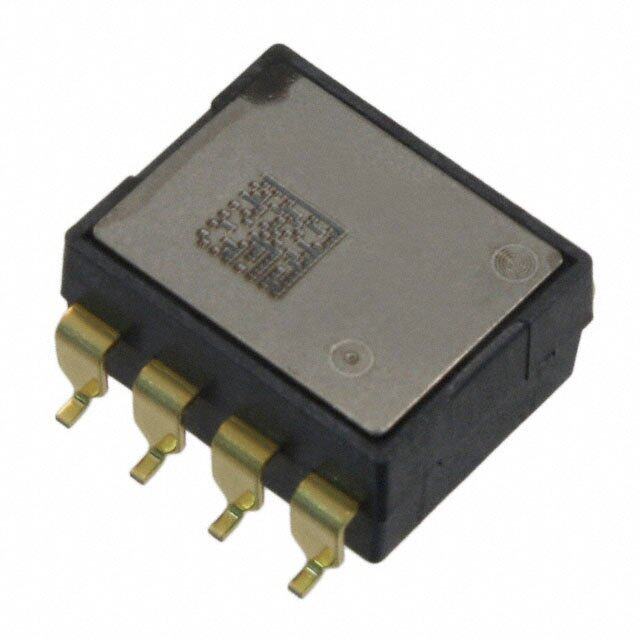
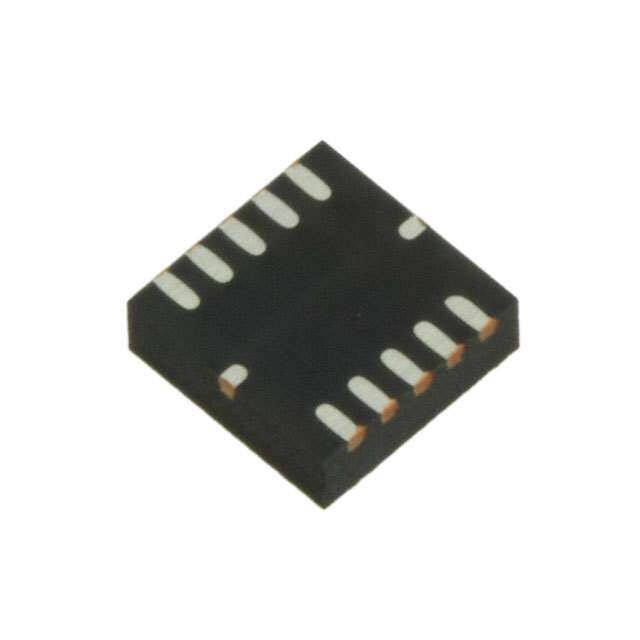
PDF Datasheet 数据手册内容提取
Small, Low Power, 3-Axis ±2 g Accelerometer ADXL327 FEATURES GENERAL DESCRIPTION 3-axis sensing The ADXL327 is a small, low power, complete 3-axis accelerometer Small, low profile package with signal conditioned voltage outputs. The product measures 4 mm × 4 mm × 1.45 mm LFCSP acceleration with a minimum full-scale range of ±2 g. It can Low power: 350 μA typical measure the static acceleration of gravity in tilt-sensing Single-supply operation: 1.8 V to 3.6 V applications, as well as dynamic acceleration, resulting from 10,000 g shock survival motion, shock, or vibration. Excellent temperature stability The user selects the bandwidth of the accelerometer using Bandwidth adjustment with a single capacitor per axis the C , C , and C capacitors at the X , Y , and Z pins. X Y Z OUT OUT OUT RoHS/WEEE lead-free compliant Bandwidths can be selected to suit the application with a range of 0.5 Hz to 1600 Hz for X and Y axes and a range of APPLICATIONS 0.5 Hz to 550 Hz for the Z axis. Cost-sensitive, low power, motion- and tilt-sensing applications The ADXL327 is available in a small, low profile, 4 mm × Mobile devices 4 mm × 1.45 mm, 16-lead, plastic lead frame chip scale package Gaming systems (LFCSP_LQ). Disk drive protection Image stabilization Sports and health devices FUNCTIONAL BLOCK DIAGRAM +3V VS ADXL327 ~32kΩ XOUT OUTPUT AMP 3-AXIS CX SENSOR ~32kΩ YOUT CDC AC AMP DEMOD OUTPUT AMP CY ~32kΩ ZOUT OUTPUT AMP CZ COM ST 07949-001 Figure 1. Rev. 0 Information furnished by Analog Devices is believed to be accurate and reliable. However, no responsibility is assumed by Analog Devices for its use, nor for any infringements of patents or other One Technology Way, P.O. Box 9106, Norwood, MA 02062-9106, U.S.A. rights of third parties that may result from its use. Specifications subject to change without notice. No license is granted by implication or otherwise under any patent or patent rights of Analog Devices. Tel: 781.329.4700 www.analog.com Trademarks and registered trademarks are the property of their respective owners. Fax: 781.461.3113 ©2009 Analog Devices, Inc. All rights reserved.
ADXL327 TABLE OF CONTENTS Features .............................................................................................. 1 Performance ................................................................................ 10 Applications ....................................................................................... 1 Applications Information .............................................................. 11 General Description ......................................................................... 1 Power Supply Decoupling ......................................................... 11 Functional Block Diagram .............................................................. 1 Setting the Bandwidth Using C , C , and C .......................... 11 X Y Z Revision History ............................................................................... 2 Self Test ........................................................................................ 11 Specifications ..................................................................................... 3 Design Trade-Offs for Selecting Filter Characteristics: The Absolute Maximum Ratings ............................................................ 4 Noise/BW Trade-Off .................................................................. 11 ESD Caution .................................................................................. 4 Use with Operating Voltages Other Than 3 V .......................... 11 Pin Configuration and Function Descriptions ............................. 5 Axes of Acceleration Sensitivity ............................................... 12 Typical Performance Characteristics ............................................. 6 Layout and Design Recommendations ................................... 13 Theory of Operation ...................................................................... 10 Outline Dimensions ....................................................................... 14 Mechanical Sensor ...................................................................... 10 Ordering Guide .......................................................................... 14 REVISION HISTORY 8/09—Revision 0: Initial Version Rev. 0 | Page 2 of 16
ADXL327 SPECIFICATIONS T = 25°C, V = 3 V, C = C = C = 0.1 μF, acceleration = 0 g, unless otherwise noted. All minimum and maximum specifications are A S X Y Z guaranteed. Typical specifications are not guaranteed. Table 1. Parameter Conditions Min Typ Max Unit SENSOR INPUT Each axis Measurement Range ±2 ±2.5 g Nonlinearity Percent of full scale ±0.2 % Package Alignment Error ±1 Degrees Interaxis Alignment Error ±0.1 Degrees Cross Axis Sensitivity1 ±1 % SENSITIVITY (RATIOMETRIC)2 Each axis Sensitivity at X , Y , Z V = 3 V 378 420 462 mV/g OUT OUT OUT S Sensitivity Change Due to Temperature3 V = 3 V ±0.01 %/°C S ZERO g BIAS LEVEL (RATIOMETRIC) 0 g Voltage at X , Y V = 3 V 1.3 1.5 1.7 V OUT OUT S 0 g Voltage at Z V = 3 V 1.2 1.5 1.8 V OUT S 0 g Offset vs. Temperature ±1 mg/°C NOISE PERFORMANCE Noise Density X , Y Z 250 μg/√Hz rms OUT OUT, OUT FREQUENCY RESPONSE4 Bandwidth X , Y 5 No external filter 1600 Hz OUT OUT Bandwidth Z 5 No external filter 550 Hz OUT R Tolerance 32 ± 15% kΩ FILT Sensor Resonant Frequency 5.5 kHz SELF TEST6 Logic Input Low +0.6 V Logic Input High +2.4 V ST Actuation Current +60 μA Output Change at X Self test 0 to 1 −210 −450 −850 mV OUT Output Change at Y Self test 0 to 1 +210 +450 +850 mV OUT Output Change at Z Self test 0 to 1 +210 +770 +1400 mV OUT OUTPUT AMPLIFIER Output Swing Low No load 0.1 V Output Swing High No load 2.8 V POWER SUPPLY Operating Voltage Range 1.8 3.6 V Supply Current V = 3 V 350 μA S Turn-On Time7 No external filter 1 ms TEMPERATURE Operating Temperature Range −40 +85 °C 1 Defined as coupling between any two axes. 2 Sensitivity is essentially ratiometric to VS. 3 Defined as the output change from ambient-to-maximum temperature or ambient-to-minimum temperature. 4 Actual frequency response controlled by user-supplied external filter capacitors (CX, CY, CZ). 5 Bandwidth with external capacitors = 1/(2 × π × 32 kΩ × C). For CX, CY = 0.003 μF, bandwidth = 1.6 kHz. For CZ = 0.01 μF, bandwidth = 500 Hz. For CX, CY, CZ = 10 μF, bandwidth = 0.5 Hz. 6 Self test response changes cubically with VS. 7 Turn-on time is dependent on CX, CY, CZ and is approximately 160 × CX or CY or CZ + 1 ms, where CX, CY, CZ are in μF. Rev. 0 | Page 3 of 16
ADXL327 ABSOLUTE MAXIMUM RATINGS Stresses above those listed under Absolute Maximum Ratings Table 2. may cause permanent damage to the device. This is a stress Parameter Rating rating only; functional operation of the device at these or any Acceleration (Any Axis, Unpowered) 10,000 g other conditions above those indicated in the operational Acceleration (Any Axis, Powered) 10,000 g section of this specification is not implied. Exposure to absolute VS −0.3 V to +3.6 V maximum rating conditions for extended periods may affect All Other Pins (COM − 0.3 V) to (VS + 0.3 V) device reliability. Output Short-Circuit Duration Indefinite (Any Pin to Common) Temperature Range (Powered) −55°C to +125°C ESD CAUTION Temperature Range (Storage) −65°C to +150°C Rev. 0 | Page 4 of 16
ADXL327 PIN CONFIGURATION AND FUNCTION DESCRIPTIONS C S S C N V V N 16 15 14 13 ADXL327 NC 1 12 XOUT TOP VIEW ST 2 (Not to Scale) 11 NC +Y COM 3 +Z 10 YOUT NC 4 +X 9 NC 5 6 7 8 NCOMC = NCOMO COCOMNNEZCOUTT 07949-003 Figure 2. Pin Configuration Table 3. Pin Function Descriptions Pin No. Mnemonic Description 1 NC No Connect (or Optionally Ground) 2 ST Self Test 3 COM Common 4 NC No Connect 5 COM Common 6 COM Common 7 COM Common 8 Z Z Channel Output OUT 9 NC No Connect (or Optionally Ground) 10 Y Y Channel Output OUT 11 NC No Connect 12 X X Channel Output OUT 13 NC No Connect 14 V Supply Voltage (1.8 V to 3.6 V) S 15 V Supply Voltage (1.8 V to 3.6 V) S 16 NC No Connect EP Exposed pad Not internally connected. Solder for mechanical integrity. Rev. 0 | Page 5 of 16
ADXL327 TYPICAL PERFORMANCE CHARACTERISTICS N > 1000 for all typical performance plots, unless otherwise noted. 60 50 50 40 %) 40 %) N ( N ( 30 O O ATI 30 ATI UL UL P P 20 O O P 20 P 10 10 0 0 1.45 1.46 1.47 1.48 1.4O9UT1P.5U0T (1V.5)1 1.52 1.53 1.54 1.55 07949-005 –0.48 –0.46 –0.44VOL–T0A.G42E (V)–0.40 –0.38 –0.36 07949-008 Figure 3. X-Axis Zero g Bias at 25°C, VS = 3 V Figure 6. X-Axis Self Test Response at 25°C, VS = 3 V 40 50 40 30 %) %) N ( N ( 30 O O ATI 20 ATI UL UL P P 20 O O P P 10 10 0 0 1.45 1.46 1.47 1.48 1.4O9UT1P.5U0T (1V.5)1 1.52 1.53 1.54 1.55 07949-006 0.36 0.37 0.38 0.39 0.40 0V.O41LT0A.4G2E0 (.4V3) 0.44 0.45 0.46 0.47 0.48 07949-009 Figure 4. Y-Axis Zero g Bias at 25°C, VS = 3 V Figure 7. Y-Axis Self Test Response at 25°C, VS = 3 V 25 30 20 %) %) 20 N ( 15 N ( O O ATI ATI UL UL OP 10 OP P P 10 5 0 0 1.40 1.42 1.44 1.46 1.4O8UT1P.5U0T (1V.)52 1.54 1.56 1.58 1.60 07949-007 0.66 0.68 0.70 0.7V2OLT0A.7G4E (V0).76 0.78 0.80 0.82 07949-010 Figure 5. Z-Axis Zero g Bias at 25°C, VS = 3 V Figure 8. Z-Axis Self Test Response at 25°C, VS = 3 V Rev. 0 | Page 6 of 16
ADXL327 70 N = 8 1.57 60 1.55 50 1.53 TION (%) 40 PUT (V) 1.51 A T UL 30 OU 1.49 P O P 20 1.47 10 1.45 1.43 0 –1.0 –0.8 –T0E.6MP–E0R.4AT–U0R.2E CO0EFF0IC.2IEN0T. 4(mg0/°.C6) 0.8 1.0 07949-011 –40 –30 –20 –10 0 1T0EMP20ERA30TUR4E0 (°5C0) 60 70 80 90 100 07949-014 Figure 9. X-Axis Zero g Bias Temperature Coefficient, VS = 3 V Figure 12. X-Axis Zero g Bias vs. Temperature, Eight Parts Soldered to PCB 60 1.57 N = 8 50 1.55 1.53 %) 40 ON ( T (V) 1.51 PULATI 30 OUTPU 1.49 O P 20 1.47 10 1.45 0 –1.0 –0.8 –T0E.6MP–E0R.4AT–U0R.2E CO0EFF0IC.2IEN0T. 4(mg0/°.C6) 0.8 1.0 07949-012 1.43–40 –30 –20 –10 0 1T0EMP20ERA30TUR4E0 (°5C0) 60 70 80 90 100 07949-015 Figure 10. Y-Axis Zero g Bias Temperature Coefficient, VS = 3 V Figure 13. Y-Axis Zero g Bias vs. Temperature, Eight Parts Soldered to PCB 60 N = 8 1.54 50 1.52 ON 40 1.50 POPULATI 30 UTPUT (V) 1.48 F O 1.46 O % 20 1.44 10 1.42 0 1.40 –3.0–2.5–2T.0E–M1P.5ER–1A.T0U–R0E.5 CO0EFF0I.C5IE1N.0T (m1.g5/°C2).0 2.5 3.0 07949-013 –40 –30 –20 –10 0 1T0EMP20ERA30TUR4E0 (°5C0) 60 70 80 90 100 07949-016 Figure 11. Z-Axis Zero g Bias Temperature Coefficient, VS = 3 V Figure 14. Z-Axis Zero g Bias vs. Temperature, Eight Parts Soldered to PCB Rev. 0 | Page 7 of 16
ADXL327 60 0.46 N = 8 0.45 50 0.44 LATION (%) 3400 TIVITY (V/g) 00..4423 OPU ENSI 0.41 P 20 S 0.40 10 0.39 0 0.38 0.38 0.39 0.40 0S.4E1NSIT0I.V42ITY (0V./4g3) 0.44 0.45 0.46 07949-017 –40 –30 –20 –10 0 TE1M0PE2R0AT3U0RE 4(°0C)50 60 70 80 90 07949-020 Figure 15. X-Axis Sensitivity at 25°C, VS = 3 V Figure 18. X-Axis Sensitivity vs. Temperature, Eight Parts Soldered to PCB, VS = 3 V 70 0.46 N = 8 60 0.45 0.44 50 POPULATION (%) 3400 SENSITIVITY (V/g) 000...444123 20 0.40 10 0.39 0 0.38 0.38 0.39 0.40 0S.4E1NSIT0I.V42ITY (0V./4g3) 0.44 0.45 0.46 07949-018 –40 –30 –20 –10 0 TE1M0PE2R0AT3U0RE 4(°0C)50 60 70 80 90 07949-021 Figure 16. Y-Axis Sensitivity at 25°C, VS = 3 V Figure 19. Y-Axis Sensitivity vs. Temperature, Eight Parts Soldered to PCB, VS = 3 V 60 0.46 N = 8 0.45 50 0.44 LATION (%) 3400 TIVITY (V/g) 00..4423 POPU 20 SENSI 0.41 0.40 10 0.39 0 0.38 0.38 0.39 0.40 0S.4E1NSIT0I.V4I2TY (V0./4g3) 0.44 0.45 0.46 07949-019 –40 –30 –20 –10 0 TE1M0PE2R0AT3U0RE 4(°0C)50 60 70 80 90 07949-022 Figure 17. Z-Axis Sensitivity at 25°C, VS = 3 V Figure 20. Z-Axis Sensitivity vs. Temperature, Eight Parts Soldered to PCB, VS = 3 V Rev. 0 | Page 8 of 16
ADXL327 600 CH4: ZOUT, 500mV/DIV 500 CH3: YOUT, 500mV/DIV 400 CH2: XOUT, 500mV/DIV A) µ NT ( 300 4 E R R 3 U C 200 2 CH1: POWER, 2V/DIV 100 0 1 OFOURTP CULTASR AITRYE OFFSET 07949-024 1.5 2.0 2.5SUPPLY (V3).0 3.5 4.0 07949-023 TIME (1ms/DIV) Figure 21. Typical Current Consumption vs. Supply Voltage Figure 22. Typical Turn-On Time, VS = 3 V CX = CY = CZ = 0.0047 μF Rev. 0 | Page 9 of 16
ADXL327 THEORY OF OPERATION The ADXL327 is a complete 3-axis acceleration measurement MECHANICAL SENSOR system. The ADXL327 has a measurement range of ±2 g minimum. The ADXL327 uses a single structure for sensing the X, Y, and Z axes. It contains a polysilicon surface micromachined sensor and signal As a result, the three axes sense directions are highly orthogonal conditioning circuitry to implement an open-loop acceleration with little cross-axis sensitivity. Mechanical misalignment of the measurement architecture. The output signals are analog voltages sensor die to the package is the chief source of cross-axis sensitivity. that are proportional to acceleration. The accelerometer can Mechanical misalignment can, of course, be calibrated out at measure the static acceleration of gravity in tilt sensing applications, the system level. as well as dynamic acceleration, resulting from motion, shock, PERFORMANCE or vibration. Rather than using additional temperature compensation circuitry, The sensor is a polysilicon surface micromachined structure innovative design techniques ensure that high performance is built on top of a silicon wafer. Polysilicon springs suspend the built-in to the ADXL327. As a result, there is neither quantization structure over the surface of the wafer and provide a resistance error nor nonmonotonic behavior, and temperature hysteresis is against acceleration forces. Deflection of the structure is measured very low (typically <3 mg over the −25°C to +70°C temperature using a differential capacitor that consists of independent fixed range). plates and plates attached to the moving mass. The fixed plates are driven by 180° out-of-phase square waves. Acceleration deflects the moving mass and unbalances the differential capacitor resulting in a sensor output whose amplitude is proportional to acceleration. Phase-sensitive demodulation techniques are then used to determine the magnitude and direction of the acceleration. The demodulator output is amplified and brought off-chip through a 32 kΩ resistor. The user then sets the signal bandwidth of the device by adding a capacitor. This filtering improves measurement resolution and helps prevent aliasing. Rev. 0 | Page 10 of 16
ADXL327 APPLICATIONS INFORMATION POWER SUPPLY DECOUPLING DESIGN TRADE-OFFS FOR SELECTING FILTER CHARACTERISTICS: THE NOISE/BW TRADE-OFF For most applications, a single 0.1 μF capacitor, C , placed DC close to the ADXL327 supply pins adequately decouples the The selected accelerometer bandwidth ultimately determines accelerometer from noise on the power supply. However, in the measurement resolution (smallest detectable acceleration). applications where noise is present at the 50 kHz internal clock Filtering can be used to lower the noise floor to improve the frequency (or any harmonic thereof), additional care in power resolution of the accelerometer. Resolution is dependent on the supply bypassing is required because this noise can cause errors analog filter bandwidth at X , Y , and Z . OUT OUT OUT in acceleration measurement. If additional decoupling is needed, a The output of the ADXL327 has a typical bandwidth greater than 100 Ω (or smaller) resistor or ferrite bead can be inserted in the 500 Hz. The user must filter the signal at this point to limit supply line. Additionally, a larger bulk bypass capacitor (1 μF or aliasing errors. The analog bandwidth must be no more than greater) can be added in parallel to C . Ensure that the DC half the analog-to-digital sampling frequency to minimize connection from the ADXL327 ground to the power supply aliasing. The analog bandwidth can be further decreased to ground is low impedance because noise transmitted through reduce noise and improve resolution. ground has a similar effect as noise transmitted through V. S The ADXL327 noise has the characteristics of white Gaussian SETTING THE BANDWIDTH USING C , C , AND C X Y Z noise, which contributes equally at all frequencies and is described The ADXL327 has provisions for band limiting the X , in terms of μg/√Hz (the noise is proportional to the square root OUT Y , and Z pins. Capacitors must be added at these pins to of the accelerometer bandwidth). The user should limit bandwidth OUT OUT implement low-pass filtering for antialiasing and noise reduction. to the lowest frequency needed by the application to maximize the The 3 dB bandwidth equation is resolution and dynamic range of the accelerometer. f = 1/(2π(32 kΩ) × C ) With the single-pole roll-off characteristic, the typical noise of −3 dB (X, Y, Z) the ADXL327 is determined by or more simply rms Noise = Noise Density × ( BW×1.6) f = 5 μF/C –3 dB (X, Y, Z) Often, the peak value of the noise is desired. Peak-to-peak noise The tolerance of the internal resistor (R ) typically varies as FILT can only be estimated by statistical methods. Table 5 is useful much as ±15% of its nominal value (32 kΩ), and the bandwidth for estimating the probabilities of exceeding various peak varies accordingly. A minimum capacitance of 0.0047 μF for C , X values, given the rms value. C , and C is recommended in all cases. Y Z Table 5. Estimation of Peak-to-Peak Noise Table 4. Filter Capacitor Selection, CX, CY, and CZ % of Time That Noise Exceeds Bandwidth (Hz) Capacitor (μF) Peak-to-Peak Value Nominal Peak-to-Peak Value 1 4.7 2 × rms 32 10 0.47 4 × rms 4.6 50 0.10 6 × rms 0.27 100 0.05 8 × rms 0.006 200 0.027 USE WITH OPERATING VOLTAGES OTHER THAN 3 V 500 0.01 The ADXL327 is tested and specified at V = 3 V; however, it can be S SELF TEST powered with VS as low as 1.8 V or as high as 3.6 V. Note that some performance parameters change as the supply voltage is varied. The ST pin controls the self test feature. When this pin is set to V, an electrostatic force is exerted on the accelerometer beam. The ADXL327 output is ratiometric; therefore, the output S The resulting movement of the beam allows the user to test sensitivity (or scale factor) varies proportionally to the supply whether the accelerometer is functional. The typical change in voltage. At VS = 3.6 V, the output sensitivity is typically 500 mV/g. output is −1.08 g (corresponding to −450 mV) in the X axis, At VS = 2 V, the output sensitivity is typically 289 mV/g. +1.08 g (+450 mV) on the Y axis, and +1.83 g (+770 mV) on The zero g bias output is also ratiometric; therefore, the zero g the Z axis. This ST pin can be left open circuit or connected to output is nominally equal to V/2 at all supply voltages. S common (COM) in normal use. The output noise is not ratiometric but is absolute in volts; Never expose the ST pin to voltages greater than VS + 0.3 V. If therefore, the noise density decreases as the supply voltage this cannot be guaranteed due to the system design (for instance, increases. This is because the scale factor (mV/g) increases while there are multiple supply voltages), then a low VF clamping the noise voltage remains constant. At VS = 3.6 V, the X- and Y- diode between ST and VS is recommended. axis noise density is typically 200 μg/√Hz, while at VS = 2 V, the X- and Y-axis noise density is typically 300 μg/√Hz. Rev. 0 | Page 11 of 16
ADXL327 Self test response in g is roughly proportional to the square of AXES OF ACCELERATION SENSITIVITY the supply voltage. However, when ratiometricity of sensitivity AZ is factored in with supply voltage, the self test response in volts is roughly proportional to the cube of the supply voltage. For example, at V = 3.6 V, the self test response for the ADXL327 S is approximately −780 mV for the X axis, +780 mV for the Y axis, AY and +1330 mV for the Z axis. At V = 2 V, the self test response S is approximately −130 mV for the X axis, +130 mV for the Y axis, and −220 mV for the Z axis. The supply current decreases as the supply voltage decreases. TOP Typical current consumption at V = 3.6 V is 375 μA, and S typical current consumption at V = 2 V is 300 μA. S AX 07949-025 Figure 23. Axes of Acceleration Sensitivity (Corresponding Output Voltage Increases When Accelerated Along the Sensitive Axis) XOUT = –1g YOUT = 0g ZOUT = 0g TOP GRAVITY XOUT = 0g XOUT = 0g YOUT = 1g TOP TOP YOUT = –1g ZOUT = 0g ZOUT = 0g TOP XOUT = 1g YOUT = 0g ZOUT = 0g TOP XYZOOOUUUTTT === 100ggg XYZOOOUUUTTT === –001ggg 07949-026 Figure 24. Output Response vs. Orientation to Gravity Rev. 0 | Page 12 of 16
ADXL327 LAYOUT AND DESIGN RECOMMENDATIONS The recommended soldering profile is shown in Figure 25, followed by a description of the profile features in Table 6. The recommended PCB layout or solder land drawing is shown in Figure 26. CRITICAL ZONE TP tP TL TO TP RAMP-UP URETL TSMAX tL T A ER TSMIN P M E T t PREHSEAT RAMP-DOWN t25°C TO PEAK TIME 07949-002 Figure 25. Recommended Soldering Profile Table 6. Recommended Soldering Profile Profile Feature Sn63/Pb37 Pb-Free Average Ramp Rate (T to T) 3°C/sec maximum 3°C/sec maximum L P Preheat Minimum Temperature (T ) 100°C 150°C SMIN Maximum Temperature (T ) 150°C 200°C SMAX Time (T to T ), t 60 sec to 120 sec 60 sec to 180 sec SMIN SMAX S T to T SMAX L Ramp-Up Rate 3°C/sec maximum 3°C/sec maximum Time Maintained Above Liquidous (T) L Liquidous Temperature (T) 183°C 217°C L Time (t) 60 sec to 150 sec 60 sec to 150 sec L Peak Temperature (T) 240°C + 0°C/−5°C 260°C + 0°C/−5°C P Time Within 5°C of Actual Peak Temperature (t) 10 sec to 30 sec 20 sec to 40 sec P Ramp-Down Rate 6°C/sec maximum 6°C/sec maximum Time 25°C to Peak Temperature 6 minutes maximum 8 minutes maximum 0.50 4 MAX 0.65 0.325 0.35 MAX 0.65 4 1.95 0.325 CENTER PAD IS NOT INTERNALLY CONNECTED BUT SHOULD BE SOLDERED FOR MECHANICAL INTEGRITY 1.95 DIMENSIONS SHOWN IN MILLIMETERS 07949-004 Figure 26. Recommended PCB Layout Rev. 0 | Page 13 of 16
ADXL327 OUTLINE DIMENSIONS 0.20 MIN PIN 1 0.20 MIN INDICATOR 13 16 PIN 1 INDICATOR 4.15 12 EXPOSED 1 2.43 TOP VIEW 4.00 SQ PAD 1.75 SQ 3.85 0.65 BSC (BOTTOM VIEW) 1.08 9 4 8 5 0.55 0.50 0.45 1.95BSC 0.05 MAX FOR PROPER CONNECTION OF 1.50 0.02 NOM THE EXPOSED PAD, REFER TO 11..4450 SEATING 00..3350 COPL0A.0N5ARITY TFSHUECEN TCPITOINION C NOO DFN ETFSIHGCISUR RIDPAATTTIOIAON NSS HAENEDT. PLANE 0.25*STACKED DIE WITH GLASS SEAL. 112008-A Figure 27. 16-Lead Lead Frame Chip Scale Package [LFCSP_LQ] 4 mm × 4 mm Body, 1.45 mm Thick Quad (CP-16-5a*) Dimensions shown in millimeters ORDERING GUIDE Model Measurement Range Specified Voltage Temperature Range Package Description Package Option ADXL327BCPZ1 ±2 g 3 V −40°C to +85°C 16-Lead LFCSP_LQ CP-16-5a ADXL327BCPZ–RL1 ±2 g 3 V −40°C to +85°C 16-Lead LFCSP_LQ CP-16-5a ADXL327BCPZ–RL71 ±2 g 3 V −40°C to +85°C 16-Lead LFCSP_LQ CP-16-5a EVAL-ADXL327Z1 Evaluation Board 1 Z = RoHS Compliant Part. Rev. 0 | Page 14 of 16
ADXL327 NOTES Rev. 0 | Page 15 of 16
ADXL327 NOTES Analog Devices offers specific products designated for automotive applications; please consult your local Analog Devices sales representative for details. Standard products sold by Analog Devices are not designed, intended, or approved for use in life support, implantable medical devices, transportation, nuclear, safety, or other equipment where malfunction of the product can reasonably be expected to result in personal injury, death, severe property damage, or severe environmental harm. Buyer uses or sells standard products for use in the above critical applications at Buyer's own risk and Buyer agrees to defend, indemnify, and hold harmless Analog Devices from any and all damages, claims, suits, or expenses resulting from such unintended use. ©2009 Analog Devices, Inc. All rights reserved. Trademarks and registered trademarks are the property of their respective owners. D07949-0-8/09(0) Rev. 0 | Page 16 of 16

 Datasheet下载
Datasheet下载

